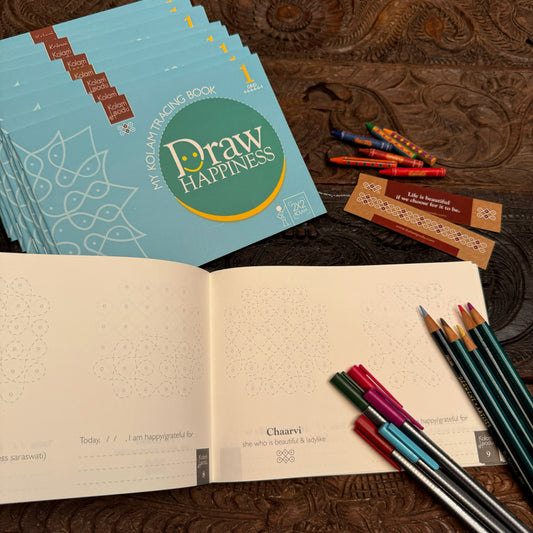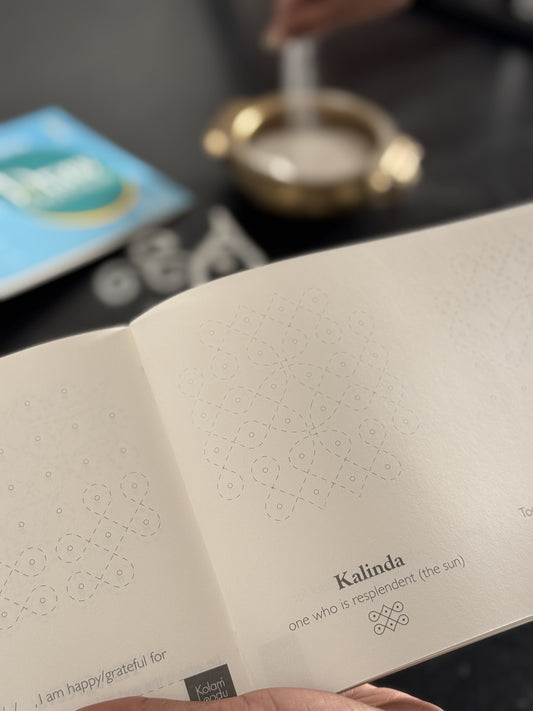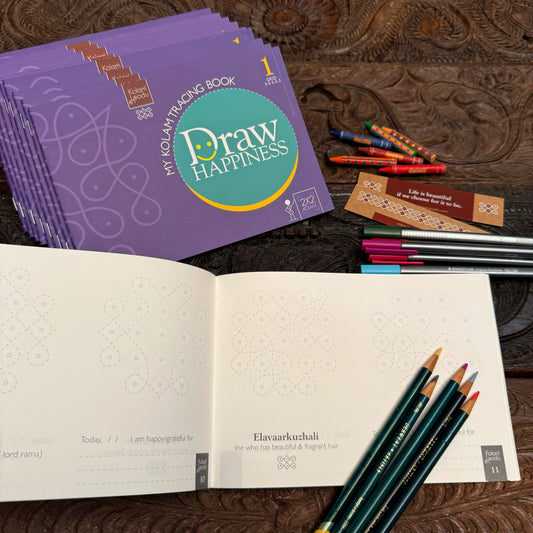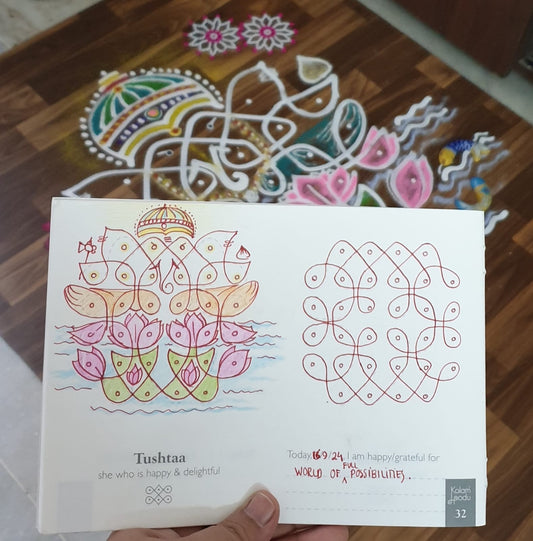Creating kolam, a traditional art form rich in sensory experiences, positively impacts sensory integration and processing skills. This multi-sensory activity engages touch, kinesthetic movement, and vision, reinforcing sensory integration in the brain. Kolam's proprioceptive demands enhance body awareness, while its geometric designs sharpen visual-spatial processing. Focused attention during kolam drawing strengthens neural connections associated with attentional control. Regular practice fosters neuroplasticity, refining fine motor skills, coordination, and promoting stress reduction for a balanced brain. Kolam, across its diverse regional names, offers a holistic sensory-motor journey.
Sensory Integration and Processing Skills refer to the brain's ability to receive, interpret, and organize sensory information from various senses, such as vision, touch, hearing, taste, and proprioception (the sense of body position). The brain then integrates and processes this sensory information to create a coherent perception of the environment and allows individuals to respond appropriately to stimuli.
Drawing a kolam can have a positive impact on sensory integration and processing skills from a brain and neuroplasticity perspective in the following ways:
- Multi-Sensory Experience: Creating kolam involves tactile (touch) and kinesthetic (body movement) experiences as individuals use their hands to draw intricate designs on the ground. Additionally, the visual input from observing the patterns and colors enhances the multi-sensory experience. Engaging multiple senses simultaneously supports sensory integration and strengthens neural connections.
- Proprioceptive Stimulation: Drawing kolam often requires maintaining body posture, bending, and reaching, which provides proprioceptive input. This stimulation helps individuals develop a better sense of body awareness and spatial orientation.
- Visual-Spatial Processing: Kolam designs are based on geometric patterns and spatial relationships. As individuals draw kolam, they engage in visual-spatial processing, strengthening the connections between brain regions responsible for spatial perception and visual analysis.
- Attention and Focus: Drawing kolam demands sustained attention and concentration on the task. This continuous focus can enhance neural connections associated with attentional control and sustained attention.
- Neural Plasticity: The brain's ability to change and adapt in response to experience is known as neuroplasticity. Drawing kolam regularly can lead to neural plasticity, as repeated engagement in the activity strengthens the connections between brain cells and reinforces specific neural pathways related to sensory processing and motor skills.
- Stress Reduction: Engaging in the creative and meditative process of drawing kolam can reduce stress and promote relaxation. Stress reduction positively impacts the brain by promoting a state of calmness and balance, which can facilitate neural plasticity and cognitive functioning.
- Fine Motor Skills: Drawing kolam involves intricate hand movements and fine motor control. Regularly practicing these movements can lead to neural refinement and improved fine motor skills.
- Coordination: The process of connecting dots and drawing intricate patterns in a kolam requires hand-eye coordination. This activity can strengthen the neural circuits involved in coordinating visual input with motor responses.
Overall, drawing kolam offers a unique opportunity to engage multiple senses and enhance sensory integration and processing skills. From a brain and neuroplasticity perspective, this art form can lead to the establishment of new neural connections and optimization of existing ones, fostering a range of cognitive benefits and sensory-motor abilities.
Kolam in Tamil Nadu is muggulu in Andhra Pradesh and Telangana, rangoli in Maharashtra, hase and rangavali in Karnataka, alopana in Bengal, to name a few.
Life is beautiful if we choose for it to be. Let’s draw happiness!







